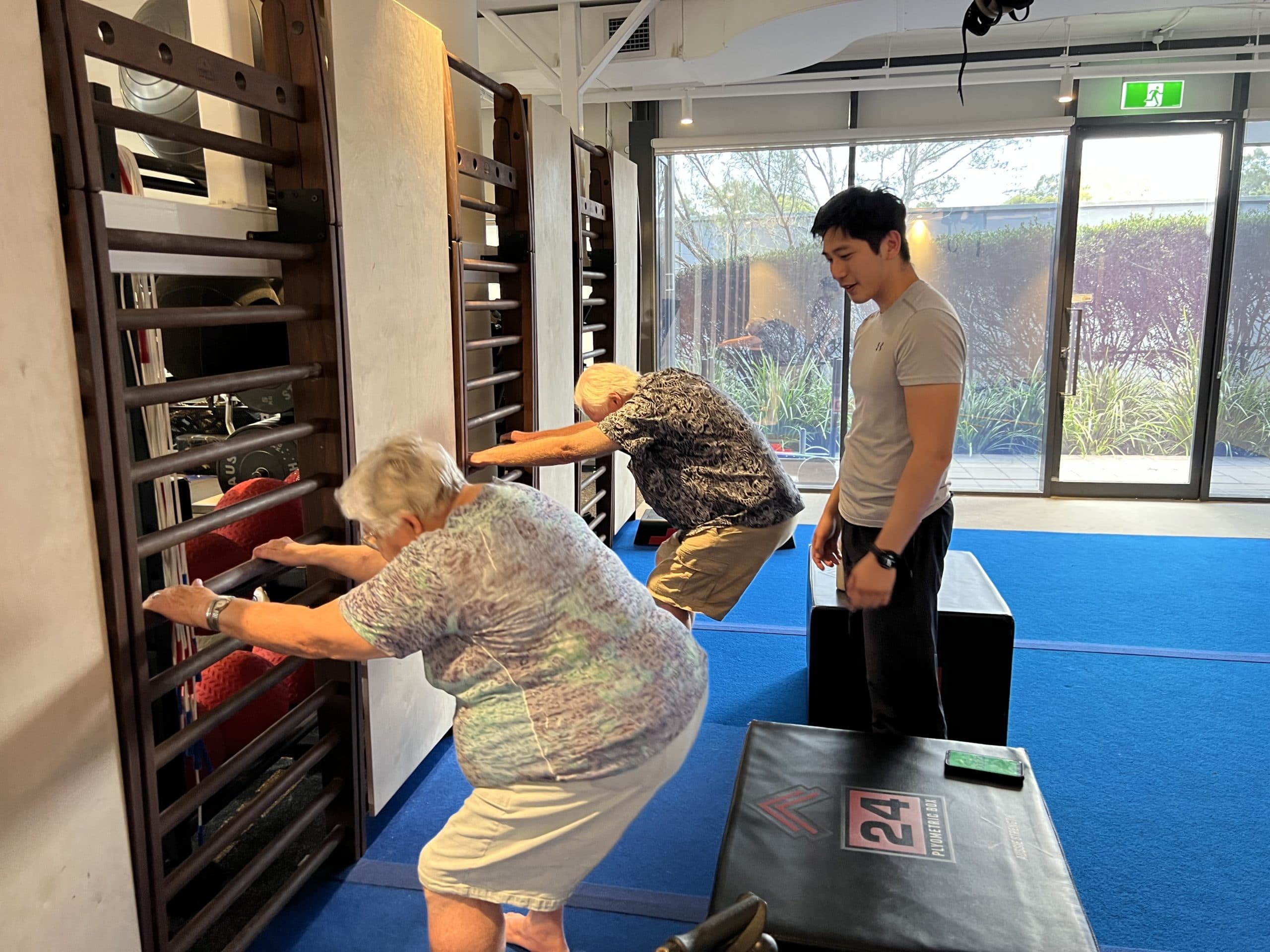Pain. We all experience it, try to manage it, and have to deal with it. But we don’t all have to live with it.
Pain. We all experience it, try to manage it, and have to deal with it. But we don’t all have to live with it.
Depending on the type of pain you are experiencing, treatment for pain may be more straight forward than you think.
Pain is one of Nathan Lum’s (Brellah Exercise Physiologist) favourite topics and challenges. As he helps many of his patients deal with their pain, he shares his experiences here.
What are the most common pain-related conditions you come across?
I come across a lot of people with chronic joint pain (pain lasting over 6 months). This usually occurs in the back, knees, hips, or shoulders.
In some cases an initial injury may have triggered it and the pain never resolved. However, some people cannot attribute their chronic pain to a specific event or injury.
Pain does not necessarily mean damage.
Particularly in relation to chronic musculoskeletal and joint pain, there’s a growing body of good evidence showing little correlation between degeneration of the structures around the joint (muscle, ligament, tendon, cartilage) and pain.
Rather, chronic pain is often the result of over-protective, guarding behaviour of the joint.
What is the prognosis for these conditions?
The majority of chronic musculoskeletal pain cases can be resolved with the right coaching and time.
There are many variables which determine the outcome of each case. Research shows that people with chronic pain who shift their perspective on physical activity is helpful – rather than detrimental for their joints.
This improves their self-efficacy (confidence and self-belief in their own ability). As a result they have much better 12-month outcomes than people who have pain-focussed and self limiting beliefs.
There is definitely hope for anyone with chronic pain to get to a stage where the pain no longer controls their life.
What role does exercise play in pain management?
Pain is a protective mechanism that helps us to survive.
In many chronic pain cases, this protective mechanism goes into overdrive resulting in guarding and fear avoidant movement patterns.
Gradual, graded progressive loading has a crucial role in rebuilding confidence and function by retraining the body out of over-guarding/protectiveness and conditioning movement as safe.
What kind of exercise do you prescribe to treat or prevent pain?
Although exercise plays a crucial role in treatment, in isolation it is not enough to address pain.
An effective exercise program would involve progressive loading which aims to gradually increase loading the joint within pain limits to slowly but intentionally edge the boundaries of pain.
However, a crucial element of an effective program is providing education on the mechanisms of pain, independent strategies for managing flare-ups, and establishing a self-directed program for the person to perform by themselves throughout the week.
Ultimately, the goal of the sessions is to promote self-efficacy and independence rather than creating a reliance on the therapist.
Do you have any amazing case studies?
I have so many awesome stories! Here are just a few:
1. BRENDA
- Is in her early 70s and presented with chronic pain in her knees and lower back
- She had undergone a total knee replacement about 6 months prior but said the pain had never resolved
- She had completed her post-operative rehabilitation and was told she would not get any more progress regarding her knee and back pain.
When I first saw her, she could not stand from a chair without significant pain and found it difficult or was totally unable to perform her basic daily activities. During her first few sessions, she was extremely anxious and guarded with her movements and could not perform an unloaded squat due to flare-ups in her lower back.
It’s been approximately 6-months and Brenda can now perform a 40kg deadlift and a 30kg squat. The pain in her lower back has resolved and although she still gets some stiffness in her right knee, it occurs rarely and does not have any effect on her life. She has no issues with any of her daily activities and says she feels stronger than she ever has in her life. She exercises independently every day doing weights and regular 40 minute walks.
2. BRIAN
- Is in his late 60s and has had chronic pain in both of his shoulders for over 10 years
- He has had both shoulders replaced but was still experiencing pain and discomfort
- When I first saw him, he was unable to lift a foam dumbbell weighing 0.3kg without pain.
Through a very gradual, graded exercise progression, he can now bench press 30kg repetitively and shoulder press 14kg overhead. We have also incorporated boxing into his program and Brian is now learning to box and has just gone through his first sparring match.
3. DAVID
- Is in his early 70s and broke his tibia from a fall
- He required surgery and could not put weight on his leg for 6 weeks as per the protocol
- Even after 6 weeks, he could not walk without relying heavily on a forearm support frame or 4-wheel walker due to pain in his lower leg.
Now David can perform a deadlift of 70kg repetitively, and does a daily 60-minute bush walk without assistance. His last hurdle was significant pain in his knee whenever he knelt on the ground. Education was provided surrounding the nature of pain and he was given daily exercise tasks which gradually increased the load on his knee.
Within 3-weeks, he was able to kneel on the ground on his knee without pain and now starts the morning “walking around on his knees” just as a reminder that he can always improve.
4. KEITH
- Is in his 90s and had severe instability in his right knee and could not walk without a 4-wheel walker and a person on each side supporting him
- He could not climb up or down stairs and required heavy assistance to stand-up from a seated position.
Within 5 months, Keith could walk independently with a walking stick. Within 7 months, he was walking without any assistance and could hold a full plank for 15 seconds. It is now 12 months since he started and he walks every day to the beach by himself without any mobility aids.
He regularly performs 60 sit-to-stands without using his hands and can do squats while carrying a dining chair. He has set the goal to climb Mt. Kosciuszko in April 2022.
What made you decide to focus on pain management?
I find pain fascinating as it’s an experience that every person goes through at one point or another in their life.
When I first started practicing, I was terrified by pain. I was worried whenever a client/patient presented with pain especially if it was following one of my sessions.
I decided that in order to effectively help my patients, I needed to understand pain and how to deal with it and so I started doing as much research as I could. The more I read the research, the more I realised I needed to learn and the more fascinated I became.
I’ve heard from many patients over the years that pain has stolen away parts of their life. There is nothing better than seeing a person who is anxious and controlled by their pain become empowered, confident, and strong.
It is amazing to see them do things they never thought they could do or get back movements and activities they thought they had lost forever.
Nathan Lum graduated from the University of Sydney in 2015 and is an Accredited Exercise Physiologist with Exercise and Sport Science Australia. He has experience in both private practice, workers compensation, and orthopaedic hospital settings where he championed evidence-based and patient-centred care. He is passionate about using exercise to empower people by aiming to change perceptions and lifestyle rather than just treating symptoms.
This article is for information purposes only. It does not constitute medical advice, is general in nature, not tailored to your personal circumstances and you should seek your own medical advice from an independent medical professional with regards to what options are best for you.

